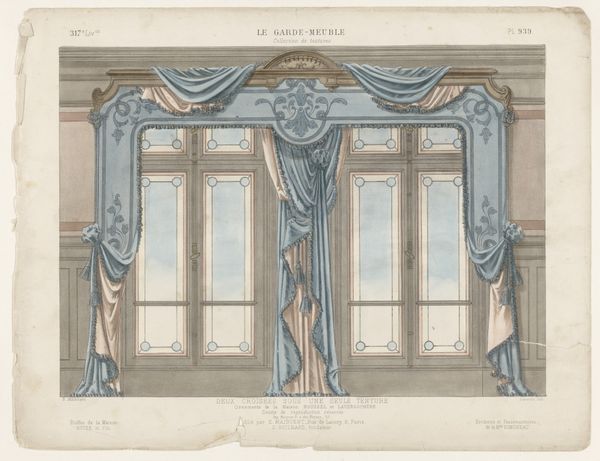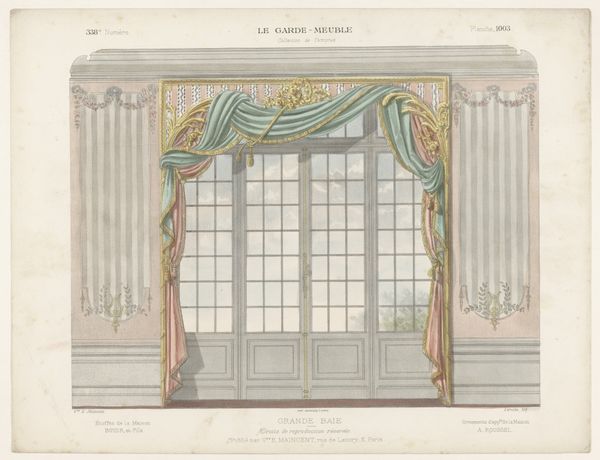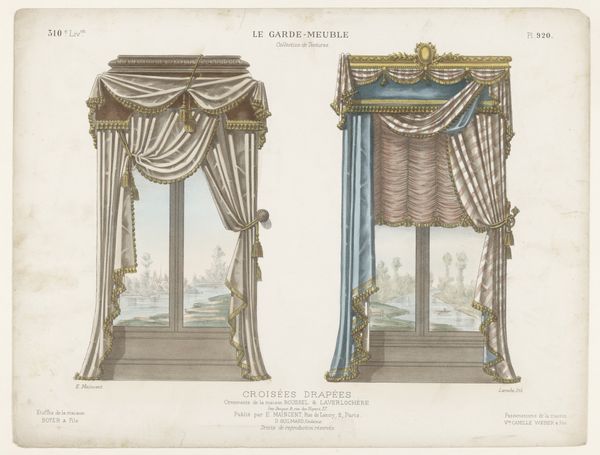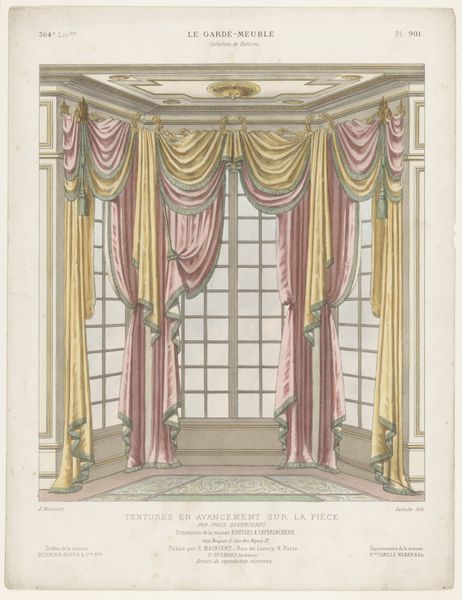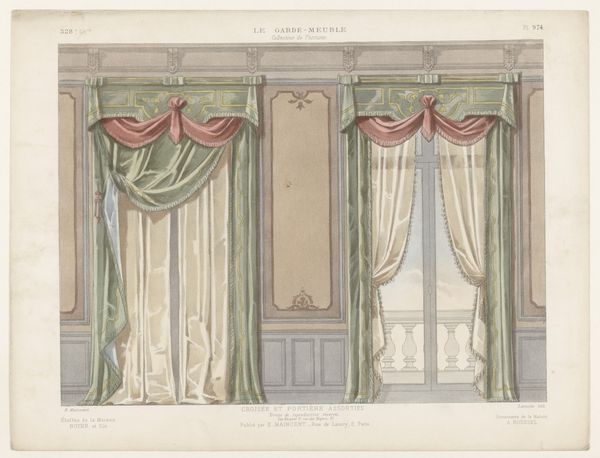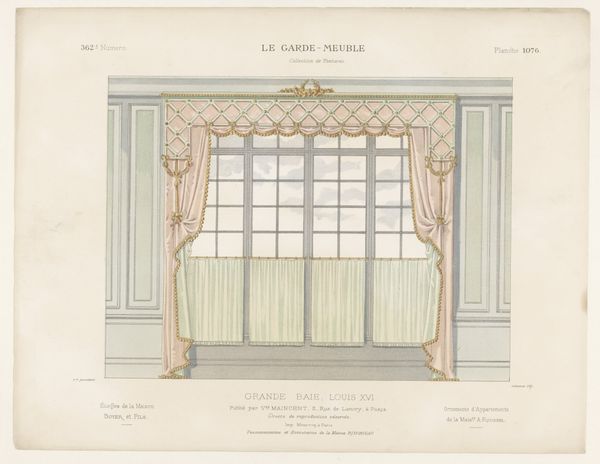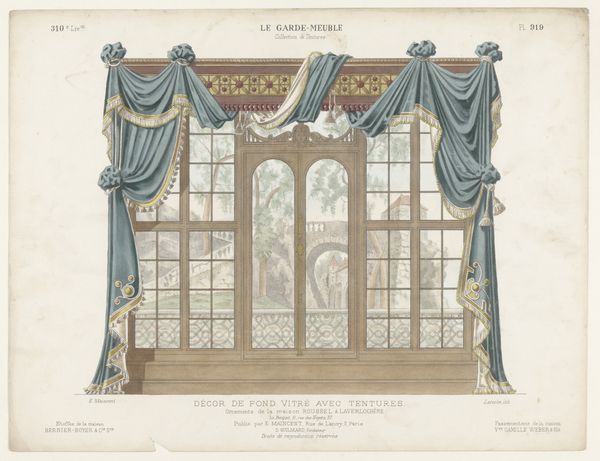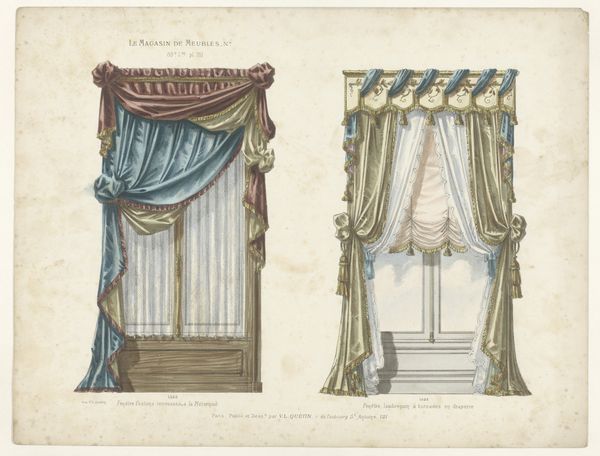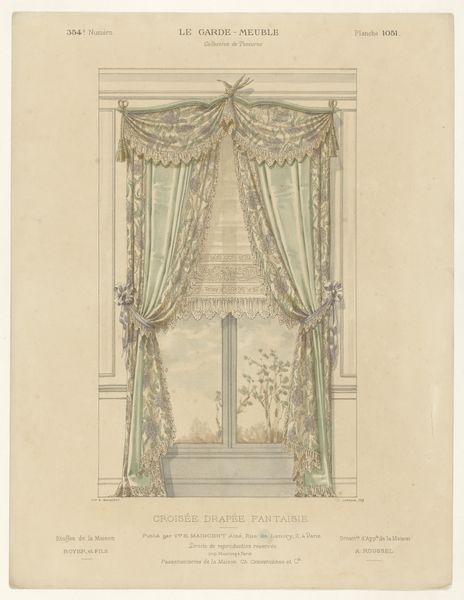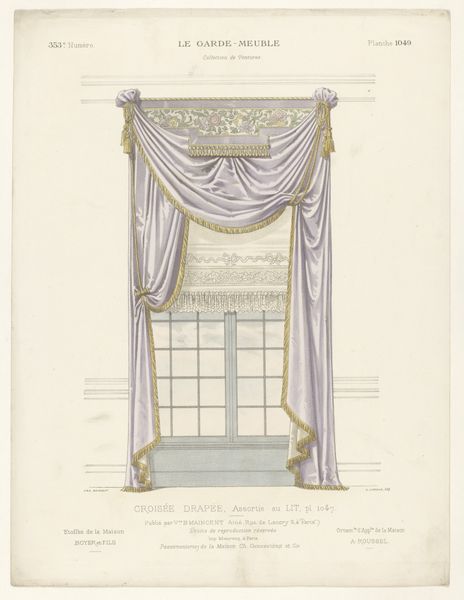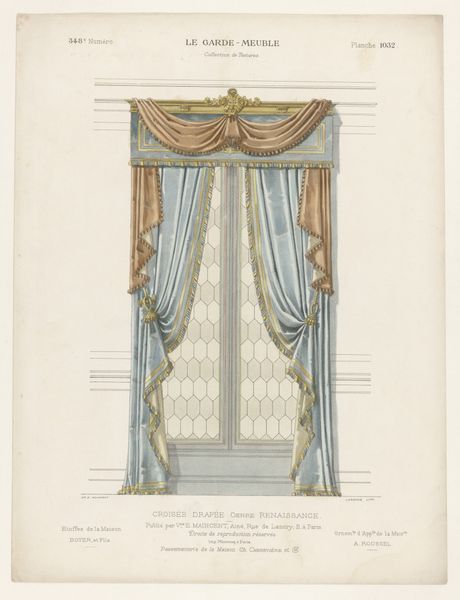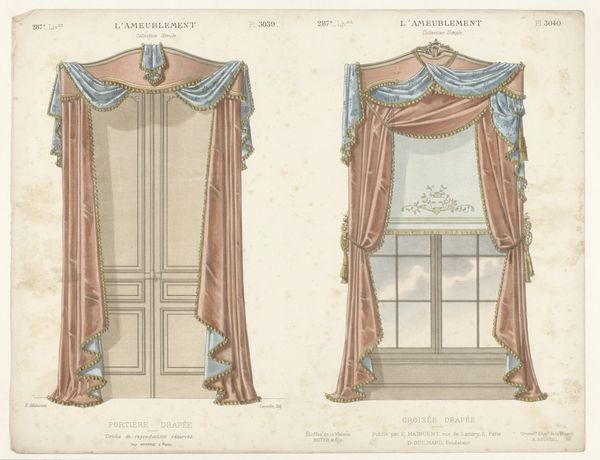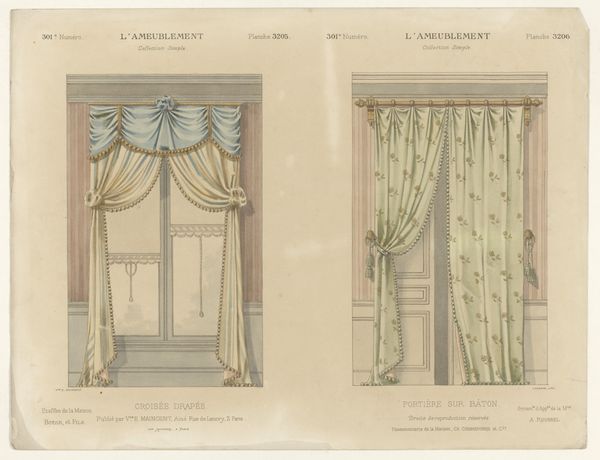
Dimensions: height 274 mm, width 359 mm
Copyright: Rijks Museum: Open Domain
Curator: This print, titled “Vensters met gordijn,” or “Windows with Curtains,” by Léon Laroche, dates from around 1885 to 1895. It employs lithography and drawing. Editor: Immediately, I’m drawn to the opulence, or at least the *representation* of opulence. It’s a riot of fabric, trim, and a strangely diffuse light. It’s almost unsettling in its dedication to… excess? Curator: Think of these curtains not as mere decoration, but as a powerful symbol of bourgeois domesticity in late 19th-century France. These luxurious fabrics screened the family from the outside world and advertised their social standing, and were deeply meaningful symbols of home, protection and exclusion. Editor: Right, and lithography makes such displays more…accessible. These images could circulate as design templates. It speaks volumes about the means of production, labor involved in both crafting the originals *and* reproducing the image itself. Think of all the seamstresses and textile workers who labored to make the real thing, only to have their skills rendered obsolete by mass-produced imitations—all advertised through these widely available prints. Curator: Absolutely. The imagery captures a transition— from handcrafted luxury to mass-produced design and imitation. Notice the relatively narrow color palette, a combination of mauve and beige—this helps the image become unified through material connections to the period. The wallpaper and curtains mimic and harmonize— reinforcing one central space or interior. Editor: I hadn’t thought about the unifying effect of the colors before. And how fascinating that these renderings become documents not only of domestic design but of the burgeoning culture of consumerism that exploded at the end of the nineteenth century. They sold a vision of class aspirations, rather than functional products, in order to create greater desire. Curator: These patterns evoke nostalgia, don't they? The curtains, though seemingly simple objects, whisper stories of family, tradition, and perhaps a touch of melancholy. These prints have become artifacts themselves—relics of this bygone era that speak about the evolution of aesthetics. Editor: Very true. I’m still fascinated by how readily such illustrations could propagate consumer desires, creating its own historical loop that's both aspirational and strangely haunted by what was to come.
Comments
No comments
Be the first to comment and join the conversation on the ultimate creative platform.
